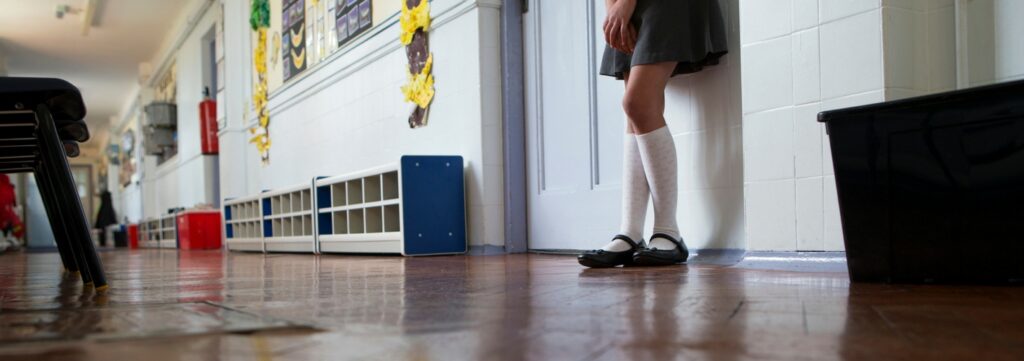Statistics from the DfE suggest that the rate of exclusions is on the rise. Permanent exclusions increased from 5,795 pupils in 2014/15 to 6,685 in 2015/16, and there has been a similar increase in fixed period exclusions.
The background
Permanent exclusions refer to pupils who are no longer allowed to return to the school. A permanent exclusion is only used as a last resort.
Fixed period exclusions, deemed less serious than permanent exclusions, involve pupils being excluded from school for a certain period of time.
Only a headteacher has the ability to exclude pupils and must take into consideration two key points:
- whether the people has breached or persistently acted outside of the school’s published behaviour policy
- whether allowing the pupil to remain at the school will impact on other pupils’ educational and welfare needs.
If both of the above points have been met, a headteacher has the power to exclude a pupil. A headteacher must decide whether it is more likely than not the pupil has done the alleged act.
When considering whether a pupil has seriously breached the school’s behaviour policy – for example, if a pupil has brought drugs or alcohol to school – the headteacher must refer to the school’s relevant behaviour policy. There may be additional issues to consider; in an example relating to drugs or alcohol, the school may wish to involve its drug/alcohol liaison officer. This demonstrates the time and careful consideration a headteacher must give not only to consideration of whether to exclude a pupil but how best to address the wider impact of that pupil’s actions.
Reasons for exclusions
Local authority statistics for 2015/16 list exclusions by reason. The list is not exhaustive but includes: physical assault, verbal abuse/threats, bullying, damage, racist abuse, theft, persistent disruptive behaviour, substance abuse and sexual misconduct.
Persistent disruptive behaviour is currently the most common reason for exclusion, with 100 pupils in Northeast England alone being permanently excluded for this reason in 2015/16, and an alarming 7,005 pupils given fixed period exclusions.
Drugs, alcohol and sexual misconduct are also significant exclusion categories, and come with wider implications for maintaining a positive pupil culture. Some commentators argue that a gradual shift in attitudes towards consuming alcohol and taking drugs is partly responsible, with these activities not deemed as negatively by students as previously. According to a BBC article from July 2017, the number of substance abuse and sexual misconduct related exclusions was at its highest ever level in 2015-2016 with 9,250 exclusions, compared to 8,580 exclusions in 2006-2007; and that engaging in such behaviour can be seen as ‘cool’. A challenge for school staff is to not only clamp down on this behaviour but to encourage a culture in which it is seen as unacceptable among pupil peer groups.
Issues faced by headteachers
Considering exclusion is not easy for headteachers. There will be a balancing act between providing education to the perpetrator and the potential disruption to many other pupils’ learning should the perpetrator remain in classes. This will be a question of fact for the headteacher, taking into account the DfE exclusion guidance and all the facts available, and will be of particular importance for permanent exclusions where the impact on the excluded child is especially significant.
A headteacher must ensure that his or her decision is rational, reasonable, fair and proportionate with regard to the pupil involved. The onus on a headteacher is, therefore, great, and does not end at the point of exclusion. In fact, there are several additional stages a headteacher must take once exclusion has been decided, such as notifying the relevant bodies and ensuring that any follow-up procedures are in place. The DfE’s statutory guidance on exclusion is a useful document which offers clear guidance and steps to follow.
